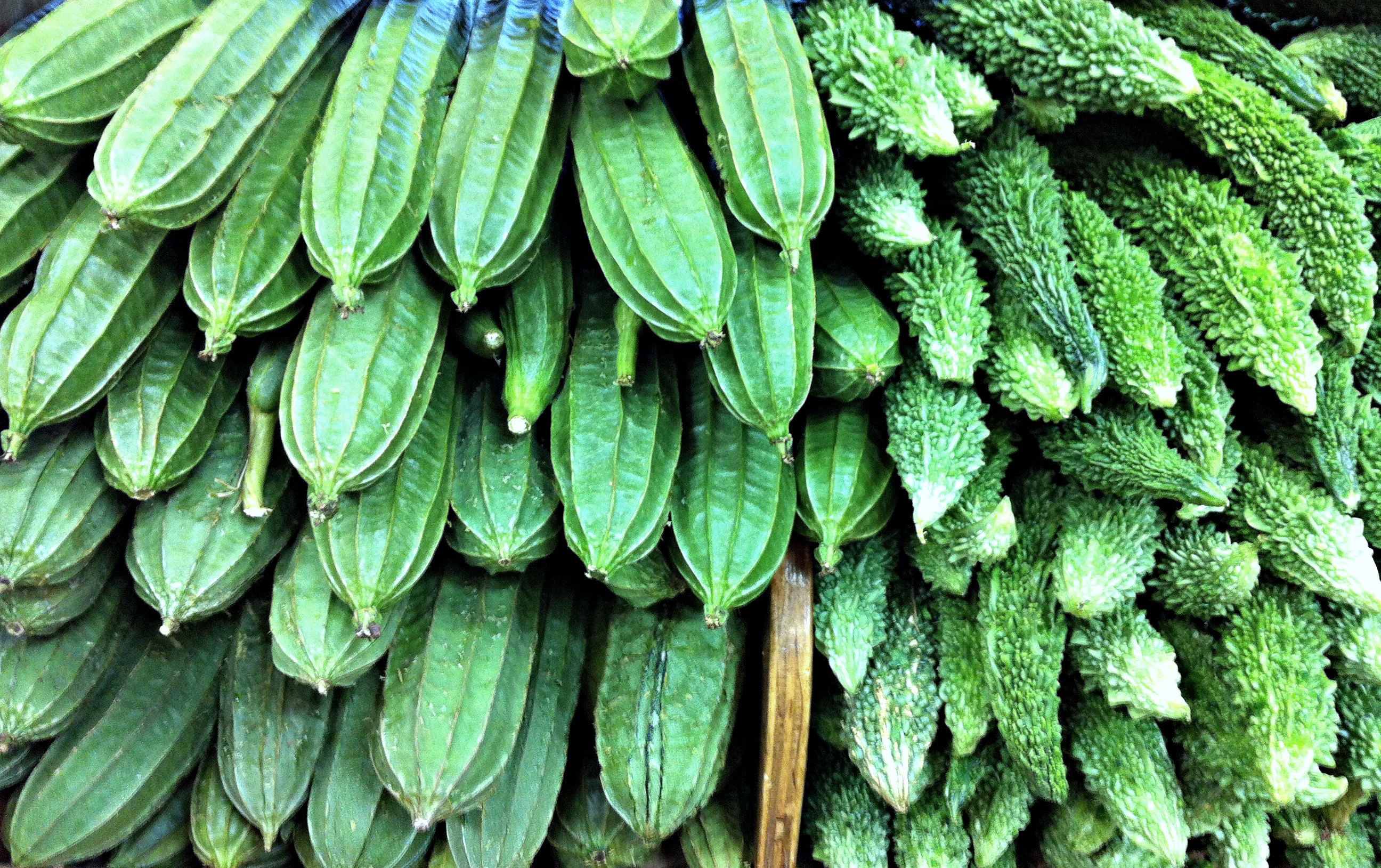Cooking With Chinese Okra, Spice Sponge
 Chinese okra piled at a Queens greenmarket.[/caption]
Chinese okra piled at a Queens greenmarket.[/caption]

I live in Jackson Heights, a part of Queens that loves to brag (and deservedly so) about its diverse population, made up of immigrants from many parts of Asia and Southeast Asia, the Middle East, South and Central America, and Eastern Europe — along with a growing number of people like myself, born and raised in the States and drawn to Queens by affordable housing and a cultural and culinary landscape that includes but is in no way dominated by fetishized artisanal-organic everything.
While shopping at places like Pacific Mart, that cater to shoppers from China, Japan and the Philippines, and Patel Brothers — with a largely Indian, Pakistani and Bangladeshi client base — I've often seen, and been intrigued by a long, dark green rough-skinned vegetable nestled among the leafy greens and the eggplants and chayote. I've seen it called toori at Patel Brothers, and Chinese okra elsewhere. The other day, I picked up a few and took them home.
Like Jerusalem artichoke, egg cream and head cheese, the name Chinese okra (luffa actangula) is a misnomer. It's a fruit closely related to the cucumber, and, when fresh and young, it has a texture and flavor somewhere between cucumber and zucchini. When dried, the fruit's fibers can be used as a scrubbing sponge, what we call a loofah. Related: When I open my news and politics-themed sandwich shop, there will definitely be a falafel and Chinese okra combo. I'll call it the Bill O'Reilly and serve it on white [privilege] bread.
I found no references to luffa in any of my cookbooks, but a quick web search told me what I needed to know:
- Peel the hard ridges first, then the rest of the skin. Use a sharp vegetable peeler, not a paring knife, to avoid waste. And make sure you get rid of all of the skin, which tastes like lawn clippings doused in Roundup.
Chinese Okra With Tomatoes
Working with garlic, onions, ginger, tomatoes and a few basic pantry items, I put together the following dish that was great over rice and would be even better with some sautéed ground pork mixed in.
2 tablespoons coconut oil (rendered lard or ghee will work too)
2 red onions, peeled and thinly sliced
4 cloves garlic, finely chopped
1 tablespoon peeled and finely chopped ginger
2 tablespoon Chinese black vinegar
1 large or 2 medium Chinese okra, peeled well and cut into bite-sized chunks
3 tablespoons soy sauce, or to taste
1 to 2 tablespoons fish sauce, to taste
1 large or 2 medium ripe red tomatoes, cored and cut into chunks
Sriracha (or other hot sauce or pepper flakes) to taste
1. In a large sauté pan with a lid, heat the oil over medium-high heat until it shimmers. Add the onions, salting lightly to help them release their juices, and cook until they are translucent and just beginning to brown, about 3 to 5 minutes. Stir in the garlic and ginger and cook, stirring frequently, for about 1 to 2 minutes, until they are fragrant.
2. Add the vinegar and allow it to cook off until almost dry, then stir in the okra, soy sauce and fish sauce until the okra is coated. Carefully add the tomato chunks to the pan — the idea is to let them cook gently without losing their skins.
3. Cover the pan, reduce the heat to medium-low, and simmer for about 10 to 15 minutes, checking once or twice to make sure that the sauce isn't scorching. If this happens, add a scant splash of water and stir gently. The dish will be done when the okra pieces are limp and translucent but still holding their shape. Season with hot sauce as desired and serve hot over rice.
Read more about vegetarian cooking on Food Republic:

